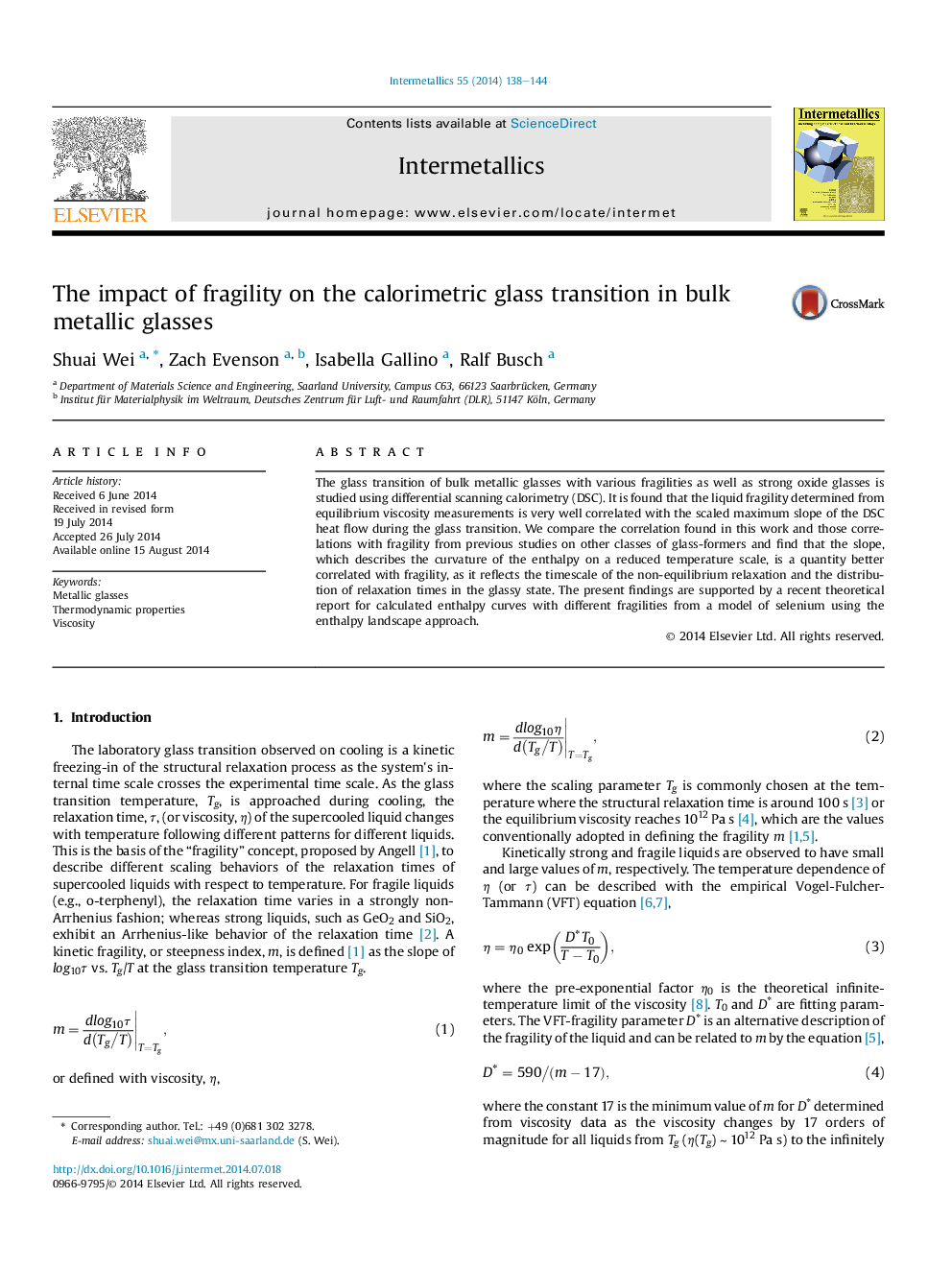| Article ID | Journal | Published Year | Pages | File Type |
|---|---|---|---|---|
| 1600064 | Intermetallics | 2014 | 7 Pages |
•The calorimetric glass transition of metallic and oxide glasses is studied.•The excess heat flow slope during glass transition is well correlated with fragility.•The slope is determined dominantly by non-equilibrium relaxation timescale.•The correlation is consistent with the model using enthalpy landscape approach.
The glass transition of bulk metallic glasses with various fragilities as well as strong oxide glasses is studied using differential scanning calorimetry (DSC). It is found that the liquid fragility determined from equilibrium viscosity measurements is very well correlated with the scaled maximum slope of the DSC heat flow during the glass transition. We compare the correlation found in this work and those correlations with fragility from previous studies on other classes of glass-formers and find that the slope, which describes the curvature of the enthalpy on a reduced temperature scale, is a quantity better correlated with fragility, as it reflects the timescale of the non-equilibrium relaxation and the distribution of relaxation times in the glassy state. The present findings are supported by a recent theoretical report for calculated enthalpy curves with different fragilities from a model of selenium using the enthalpy landscape approach.
